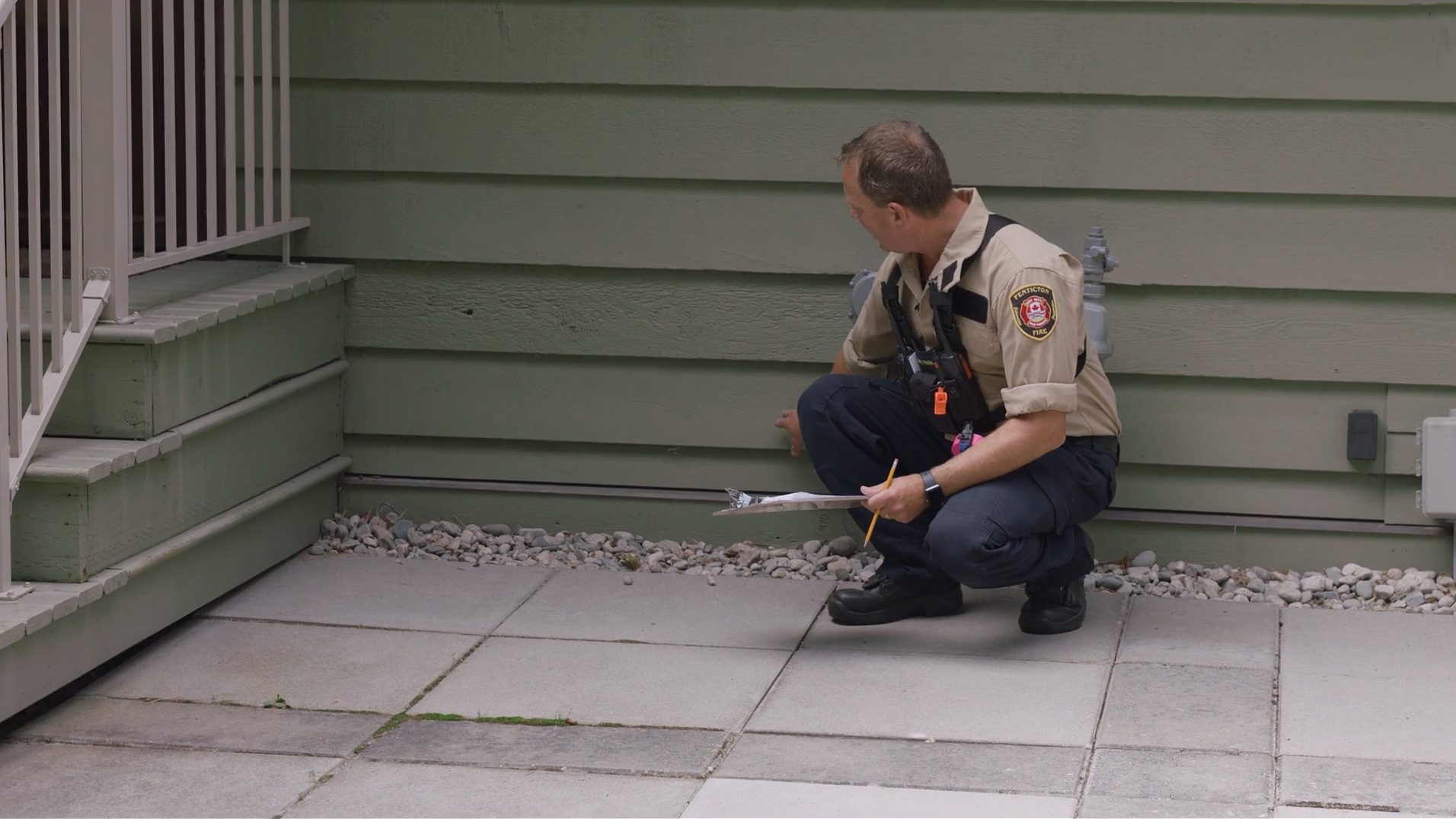Our latest video shows how a FireSmart Home Ignition Zone Assessment helps identify risk factors, giving homeowners crucial information on how to protect their property against wildfire.
This brief film starts by highlighting the assessment’s foundation – what experts call “structure ignition zones”. In a nutshell, these are the four zones from the structure outwards that all need their own set of FireSmart techniques applied to them.
What exactly does that entail? Let’s take a look.

The Non-Combustible Zone (0-1.5 metres)
Ideally, the exterior of the structure, plus a 1.5-metre area all around it, should constitute a “non-combustible zone.” This is the direct interface between your home and any approaching wildfire threat, so attention to detail is crucial in these spaces.
Fire-resistant materials are particularly important on a roof, for instance, because unlike a vertical wall, anything that falls on it is likely to stay there. Gutters should always be kept clear of debris, and any decking, even if it’s fireproof, should have a uniform finish: no opening is too small for the leaves and other vegetation that will otherwise create a fuel stockpile right under your feet – or the single tiny ember that ignites them and destroys your home.
Zone 1 (1.5-10 metres)
In Zone 1, the priority is to eliminate or tightly restrict any fuel that could give a wildfire access to the structure. If you really can’t go without trees or shrubbery in this zone, at least go with less flammable species (see FireSmart landscaping), plant them sparsely, and never let them dry out. Firewood should be moved outside this zone unless it is kept in a garage or shed with fire resistance similar to the home. The same goes for vehicles, propane tanks, and other combustibles.
Zone 2 (10-30 metres)
In Zone 2, the primary task is to ensure that if and when wildfire takes hold here, the density of the fuel is insufficient for the fire to reach maximum intensity. In practice that means a) selectively removing evergreens in order to ensure spacing of at least 3 metres between tree crowns or groups thereof; b) pruning all branches on remaining evergreens up to a height of 2 metres; and c) regularly removing fallen branches, needles, and any other debris that might feed a ground fire.
Zone 3 (30-100 metres)
Zone 3 is where you may have opportunities to get strategic about defending your home against wildfire. Of course, you can beef up your defences by doing more thinning and pruning, but the landscape also might allow you – and possibly your neighbour(s) – to manage vegetation in a way that establishes fire breaks. Situations like these are not always visible to the untrained eye, so this is where calling in a Local FireSmart Representative to share some professional advice can be of decisive importance.
What you can do next
This year’s wildfire season is largely over for BC, so now is the time to harden your defences against whatever 2021 has to throw at your property.
Get started by watching Penticton Fire Chief Larry Watkinson perform an assessment in the video below.
To assess your own property, download a FireSmart Home Ignition Zone Assessment Score Card by clicking here.
If you want help or advice, you can also contact your Local FireSmart Representative.
